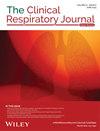Prevalence, Distribution, and Risk Factors of Mycobacterium Other Than Tuberculosis Among Tuberculosis Presumptive Patients in Karonga District in Malawi
Abstract
Introduction
Besides tuberculosis (TB), there are also other nontuberculous mycobacteria (NTM) that present with similar clinical signs and symptoms as TB. If not promptly found and treated, these organisms may affect the programming of the TB control and elimination campaign. The study sought to establish the prevalence, distribution, and factors contributing to MOTT infections among presumptive TB patients in the Karonga district.
Methods
A descriptive cross-sectional study research design was employed. A total of 196 participants were included in the study using a census approach. Data were collected by administering a questionnaire to the health care worker, and a sputum specimen was collected from the participants; this specimen was used to examine the presence of mycobacterium using the microscope. Regardless of the results at the district-level laboratory, all the specimens were then sent to the Mzuzu region TB reference laboratory to isolate Mycobacterium tuberculosis and Mycobacterium Other Than Tuberculosis.
Results
Of the 196 samples collected, 14 (7.1%) were positive at the district level. When sent for culture, 195 (99.5%) had culture results, and 23 (12%) had growth in culture. Out of the 23 (100%) culture-positive results, 12 (52%) were MOTT-positive, while 11 (48%) were MTB complex. There were more men, seven (58%) with MOTT-positive than women, five (42%), and more in the age group of 15–39 years old, with six (50%) and less in more than 60 years old two (16.7%).
Conclusion
The results show the presence of MOTT infections among presumptive TB patients who submitted samples to the study. The distribution by sex shows that more men had MOTT infections than women. However, all the risk factors listed for the study were not significant for MOTT infections. The recommendation is to improve the testing techniques to identify these microorganisms, which are neglected but very difficult to assess, especially when no clear population is at risk of getting these infections compared with TB.


 求助内容:
求助内容: 应助结果提醒方式:
应助结果提醒方式:


